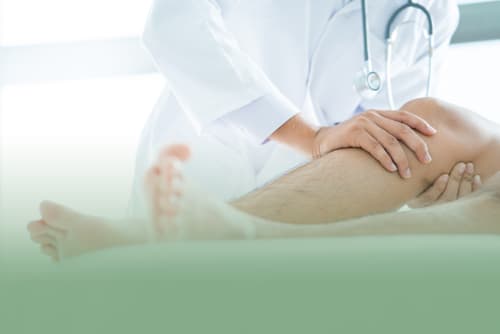An increasing number of American adults are starting to exercise and play sports, which means more of those active adults will be needing care for sports-related injuries. Add this to the considerable amount of kids and teens involved in organized sports, and it’s no wonder the field of sports medicine is in high demand.
Common Sports Injuries Treated with Revolutionary Solutions
Orthopedic sports medicine specialists help injured individuals of all ages with the treatment and rehabilitation of any kind of a muscle or a joint problem, ranging from ankle sprains and shoulder injuries to neck pain.
“From head to toe, we help people to play and be active from a musculoskelatal perspective,” states Dr. Ed Tingstad, Orthopedic Surgeon at Pullman Regional Hospital.
The most common injuries seen by Dr. Tingstad and his team include torn rotator cuffs, ACL injuries, shoulder dislocations, stress fractures, and ankle sprains. Injuries vary per sport, so a football player might have a different treatment need than a ballet dancer. Fortunately, a majority of issues—upwards of 90 percent—do not require surgery.
“We tend to think of surgery as our last option,” assures Dr. Tingstad. “Many times, it’s some reassurance, a little bit of protection, and then a rehab program that allows patients to get back to a quick return.”
Emerging technology such as taking the patient’s own blood, concentrating its components, and then re-injecting it at the area of injury is a biologic approach that speeds healing, reduces pain, and avoids surgical intervention—or at least delays it.
What Happens when Surgery Is Unavoidable
If surgery is required, Dr. Tingstad and his colleagues aim for the least invasive procedure possible. Whereas repairing an ACL used to be quite invasive, it is becoming less so. New pilot studies by Dr. Martha Murray in Boston and at the Cleveland Clinic involve sewing a collagen sponge in the knee, which has shown promise in helping the ligament grow back and adhere to the bone.
“Dr. Murray’s work is really exciting, because we can increasingly optimize healing with biologic solutions,” states Dr. Tingstad.
Pullman Comes Together to Improve Sports Medicine
Pullman Regional Hospital’s Orthopedic Center of Excellence serves both Washington State University and the University of Idaho, and Dr. Tingstad has been the Orthopedic Head Team Physician for Washington State for the last 19 years. He and his team members have been fellowship trained, meaning they underwent additional training in sports medicine beyond the typical orthopedic certification.
As orthopedic technologies continue to advance, Dr. Tingstad assures Pullman will be advancing right along with them. “It’s a fun time to be a sports medicine physician right now, because there are so many new and good things coming,” he shares. “For the people who come to Pullman Regional Hospital, it’s a good feeling to know we have professionals who have such vast experience and who are respected across the country.”


